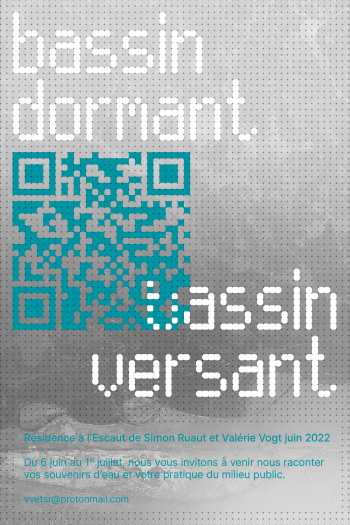Chacun participe de (et à) l’économie de ce bassin dormant - bassin versant : le pissenlit qui pousse dans un
interstice de trottoir, le merle météorologue et qui par son chant articule le lever et le coucher des autres
oiseaux, les humains qui établissent leur séjour : chacun en est un affluent, et donc un « influent ». Et dans ce
réseau d’interdépendances se dessine une autre cartographie de l’habitabilité, une autre charte relationnelle, à
laquelle nous participons tous. Et cela que nous y soyons acteur, témoin ou passant.
Cet été, 200 affiches s’inscriront dans le paysage des rues de Bruxelles. Par le biais d’un QRcode (une sorte de
regard), vous pourrez avoir accès à une trame virtuelle, « souterraine », constituée de capsules vidéo, de textes,
d’enregistrements sonores. Ils seront issus des rencontres auxquelles, du 6 juin au 1er juillet 2022, à l’Escaut,
nous vous invitons, et où nous recueillerons les récits de vos pratiques diverses de l’espace/milieu public (récits
théoriques, concrets, poétiques, activistes…), mais aussi ce que vous nous direz de votre relation à l’eau.
1 Laura Vazquez (2022). Quelque chose de surnaturel, Trois. In Vous êtes de moins en moins réels. Anthologie
2014-2021. Paris : Points Poésie.
2 Georges Didi-Huberman (2022). Le témoin jusqu’au bout. Paris : Les Editions de Minuit.
